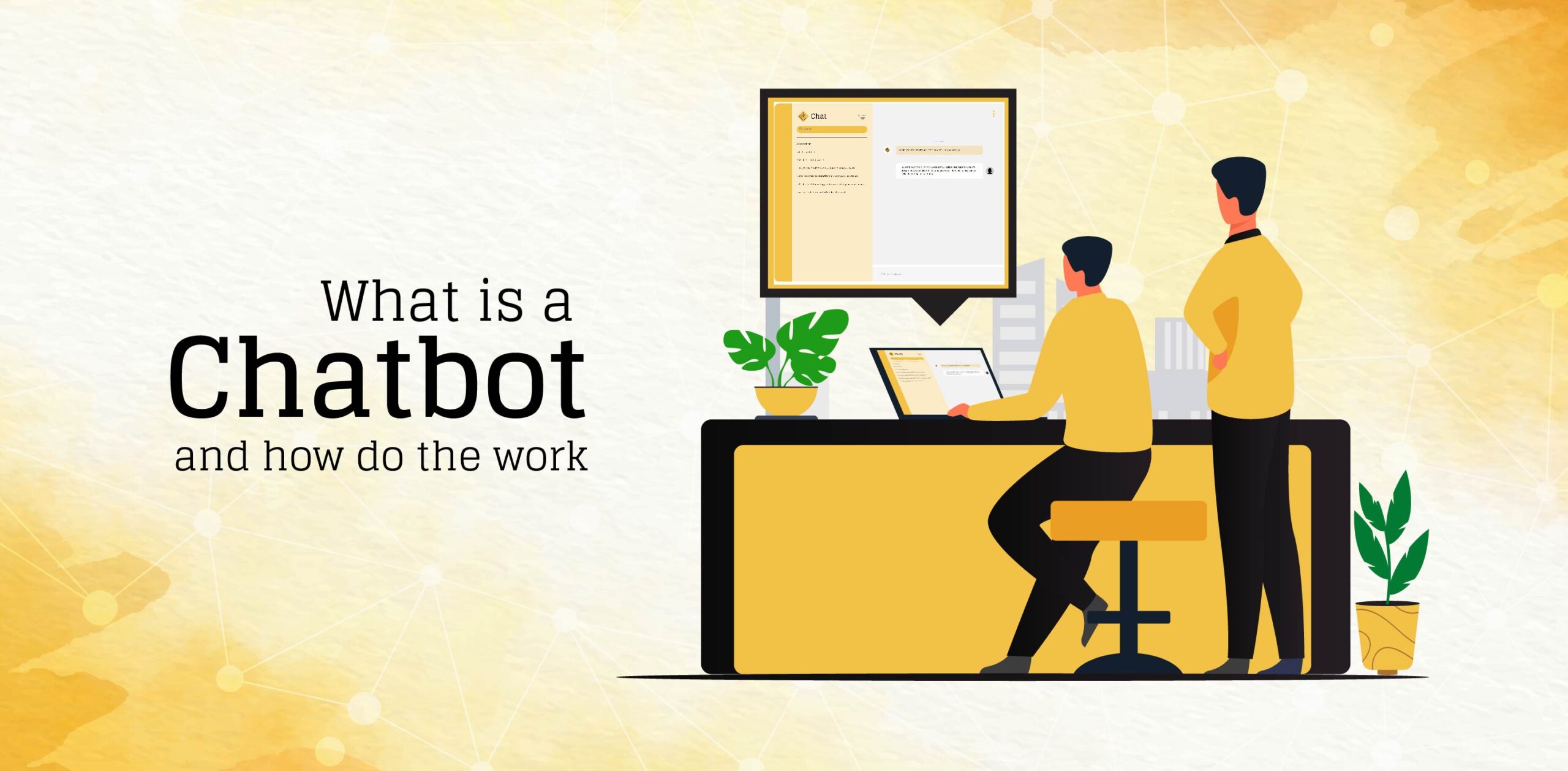Chatbots have become an integral part of our digital lives, transforming the way we interact with technology. But what is a chatbot? Simply put, a chatbot is a software application designed to simulate human conversation. These virtual assistants are used across various platforms to provide customer support, answer questions, and even perform tasks.
Understanding a chatbot can benefit both individuals and businesses. With their ability to automate interactions and provide instant responses, chatbots are revolutionizing customer service and operational efficiency. This comprehensive guide will explore the history, functionality, types, and evolution of chatbots, shedding light on their growing significance.
What is a Chatbot?
A chatbot is a computer program that uses artificial intelligence (AI) and natural language processing (NLP) to understand and respond to human language. The concept of chatbots dates back to the 1960s when Joseph Weizenbaum created ELIZA, one of the first chatbots. ELIZA was designed to simulate a psychotherapist, engaging users in conversations using pattern matching and substitution methodology.
Since then, chatbots have evolved significantly, especially with advancements in AI and machine learning. Modern chatbots can understand context, learn from interactions, and provide more accurate responses. They are deployed on websites, mobile apps, messaging platforms, and social media to assist users in various ways, from answering queries to processing transactions.
Key points to understand about chatbots include their ability to mimic human conversation, their deployment across multiple platforms, and their use of AI to improve over time. Today, chatbots are essential tools for businesses looking to enhance customer service, increase engagement, and streamline operations.
How Do Chatbots Work?
Problem Solver
Chatbots are excellent problem solvers. They can handle customer inquiries, troubleshoot issues, and provide solutions without human intervention. By analyzing user input, chatbots can determine the best course of action and provide relevant information or direct the user to the appropriate resource.
Task-Oriented
Task-oriented chatbots are designed to perform specific functions such as booking appointments, processing orders, or providing weather updates. These bots follow predefined workflows and use decision trees to guide users through various tasks. Their primary goal is to accomplish specific tasks efficiently and accurately.
Data-Driven and Predictive
Data-driven and predictive chatbots leverage AI and machine learning to analyze large datasets and predict user behavior. These bots can provide personalized recommendations, forecast trends, and offer insights based on historical data. By understanding user preferences and patterns, predictive chatbots can deliver a more customized and effective user experience.
Understanding how do chatbots work involves recognizing their ability to process natural language, learn from interactions, and use data to provide intelligent responses. These capabilities enable chatbots to perform a wide range of functions, from answering simple questions to handling complex tasks.
Different Types of Chatbots
Button-Based Chatbots
Button-based chatbots are the simplest form of chatbots, using predefined buttons for user interactions. These bots guide users through a series of options, making it easy to navigate and find information. Button-based chatbots are ideal for basic customer service tasks and straightforward queries.
Rules-Based Chatbots
Rules-based chatbots operate on a set of predefined rules and decision trees. They provide responses based on specific keywords or phrases entered by the user. While they can handle more complex interactions than button-based bots, their functionality is limited by the rules set by the developers.
AI-Powered Chatbots
AI-powered chatbots use machine learning and natural language processing to understand and respond to user queries more naturally. These bots learn from past interactions, allowing them to provide more accurate and relevant responses over time. AI-powered chatbots are versatile and can handle a wide range of tasks and queries.
Voice Chatbots
Voice chatbots interact with users through voice commands, utilizing speech recognition technology. These bots are commonly used in virtual assistants like Siri, Alexa, and Google Assistant. Voice chatbots offer a hands-free user experience and can perform tasks such as setting reminders, answering questions, and controlling smart home devices.
Generative AI Chatbots
Generative AI chatbots use advanced AI models to generate responses based on the context of the conversation. Unlike other chatbots that rely on predefined responses, generative AI chatbots create unique replies, making interactions more dynamic and personalized. These bots are at the forefront of AI technology, capable of engaging in human-like conversations.
Understanding the different types of chatbots is essential for businesses looking to implement chatbot solutions. Each type offers unique capabilities and use cases, allowing businesses to choose the most suitable option for their needs.
Value Chatbots Bring to Businesses and Customers
Chatbots provide significant value to both businesses and customers. Here are some key benefits and considerations when creating a chatbot:
1. Improved Customer Service
Chatbots offer 24/7 customer support, ensuring that users’ queries are addressed promptly, even outside business hours. This improves customer satisfaction and loyalty by providing immediate assistance when needed.
2. Increased Efficiency
Chatbots can handle multiple interactions simultaneously, reducing the workload on human staff. This allows businesses to manage a higher volume of inquiries and improve overall operational efficiency.
3. Cost Savings
By automating routine tasks and customer interactions, chatbots can significantly reduce operational costs. Businesses can allocate resources more effectively, focusing on more complex tasks that require human intervention.
4. Enhanced Engagement
Chatbots provide a personalized and interactive user experience, keeping customers engaged and satisfied. They can offer recommendations, guide users through processes, and provide relevant information based on user preferences.
5. Lead Generation and Conversion
Chatbots can capture leads and guide potential customers through the sales funnel. By answering questions and providing information, they can assist in converting leads into paying customers.
6. Data Collection and Insights
Chatbots collect valuable data on customer interactions, preferences, and behaviors. This data can be used to gain insights, refine marketing strategies, and improve products or services.
7. Scalability
Chatbots can easily scale to handle increased traffic and demand. Businesses can deploy chatbots across multiple platforms and languages, ensuring consistent and efficient customer service.
8. Consistency
Chatbots provide consistent responses, ensuring that customers receive accurate and reliable information. This consistency helps build trust and credibility with customers.
9. Accessibility
Chatbots make it easy for customers to access information and services. They can be deployed on websites, mobile apps, social media, and messaging platforms, providing a seamless user experience across different channels.
10. Competitive Advantage
Implementing a chatbot can give businesses a competitive edge by enhancing customer service, improving efficiency, and providing valuable insights. Staying ahead of technological trends can help businesses remain relevant and successful in a rapidly changing market.
When creating a chatbot, it’s important to focus on user experience, functionality, and continuous improvement. By leveraging chatbots’ capabilities, businesses can enhance customer service, streamline operations, and achieve their business goals.
Why Were Chatbots Created?
Chatbots were created to address the growing need for efficient and scalable customer service solutions. As businesses expanded and customer expectations increased, traditional customer support methods became insufficient. Chatbots were developed to automate interactions, provide instant responses, and handle many inquiries.
The primary reasons behind the creation of chatbots include:
1. Efficiency
Chatbots automate routine tasks and interactions, reducing the need for human intervention. This increases efficiency and allows businesses to manage more inquiries without additional staff.
2. Availability
Chatbots provide 24/7 customer support, ensuring users can get assistance anytime. This availability improves customer satisfaction and helps businesses cater to a global audience.
3. Cost Savings
By automating customer service tasks, chatbots help businesses save on operational costs. This allows businesses to allocate resources more effectively and invest in other growth areas.
4. Personalization
Chatbots can provide personalized interactions based on user data and preferences. This enhances the customer experience and helps businesses build stronger customer relationships.
5. Data Insights
Chatbots collect valuable data on customer interactions, preferences, and behaviors. This data can be used to gain insights, improve products and services, and refine marketing strategies.
6. Scalability
Chatbots can easily scale to handle increased traffic and demand. This makes them ideal for businesses expanding their operations and reaching a larger audience.
Understanding why chatbots were created helps businesses appreciate their value and potential. By leveraging chatbots, businesses can enhance customer service, improve efficiency, and achieve their business goals.
How Chatbots Have Evolved
Chatbots have come a long way since their inception in the 1960s. Here is a brief overview of their evolution:
1960s: ELIZA
The first chatbot, ELIZA, was created by Joseph Weizenbaum in the 1960s. ELIZA used pattern matching and substitution to simulate a psychotherapist, engaging users in simple conversations.
1990s: A.L.I.C.E
In the 1990s, Richard Wallace developed A.L.I.C.E (Artificial Linguistic Internet Computer Entity). A.L.I.C.E used natural language processing and aimed to engage in human-like conversations. It laid the groundwork for more advanced chatbots.
2000s: SmarterChild
SmarterChild was a popular chatbot on AOL Instant Messenger and MSN Messenger. It provided users with information, entertainment, and simple interactions, a precursor to modern virtual assistants.
2010s: Virtual Assistants
The 2010s saw the rise of virtual assistants like Siri, Alexa, and Google Assistant. These AI-powered chatbots used advanced speech recognition and natural language processing to provide more sophisticated interactions and perform various tasks.
Late 2010s: AI and Machine Learning
Advancements in AI and machine learning led to the development of more intelligent chatbots. These bots could understand context, learn from interactions, and provide more accurate and relevant responses. AI-powered chatbots became widely used in customer service, marketing, and sales.
2020s: Generative AI Chatbots
The 2020s saw the emergence of generative AI chatbots, which used advanced AI models to generate unique responses. These bots provided more dynamic and personalized interactions, pushing the boundaries of chatbot capabilities.
The evolution of chatbots reflects advancements in technology and changing user expectations. Today, chatbots are more intelligent, versatile, and capable than ever before, offering significant value to businesses and customers alike.
Conclusion
In understanding what is a chatbot, we uncover a powerful tool that has transformed customer service and business operations. From their humble beginnings with ELIZA to the sophisticated AI-powered assistants of today, chatbots have evolved significantly. They offer a range of benefits, including improved efficiency, cost savings, and enhanced customer engagement.
As technology advances, chatbots will likely become even more integral to our digital experiences. By leveraging chatbots’ capabilities, businesses can stay ahead of the curve, providing better service and achieving their goals in an increasingly competitive market.
Whether you’re a business looking to enhance customer service or an individual curious about the technology, understanding what a chatbot is and how it works is essential in today’s digital age.

